An Outlook of the Cerrado Coffee Crop in Brazil
- Igor Bragato
- Sep 1, 2022
- 6 min read
On August 17th, we visited the city of Araguari, localized in the Cerrado Mineiro, one of Brazil’s main #coffee producing areas.
Our findings showed that farmers mostly harvested what they expected, and there were no surprises about the quantity for 22. We also found some evidence of potential damage to the 23 crop from early development of beans, cold damage and stress to the plants. However, the overall assessment was of general health and positive prospects for the 23 crop, even if not 100% optimal.
In this article, I will share the key discoveries we made, present and analyze the conditions in three different farms and give you our overview on weather and crop potential for 23.
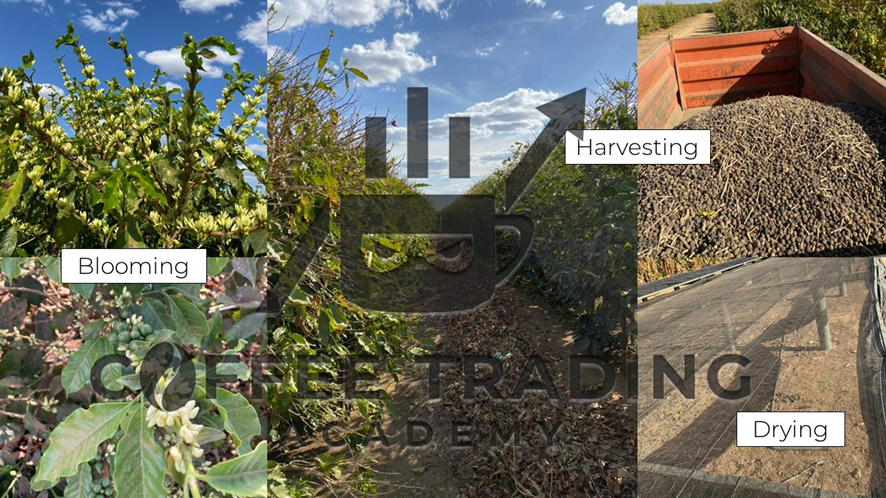
Overview
Araguari is situated in Minas Gerais, the state that accounts for over half of the Brazilian coffee crop, the region is strong in #Arabica variety and gives us a good outlook on crop conditions.
Together, Sul de Minas and Cerrado account for an average of 28% of Brazil’s production, according to data from Conab. This makes it easier to understand why this is one of the main regions we look at when analyzing weather and its impact on the coffee crop.
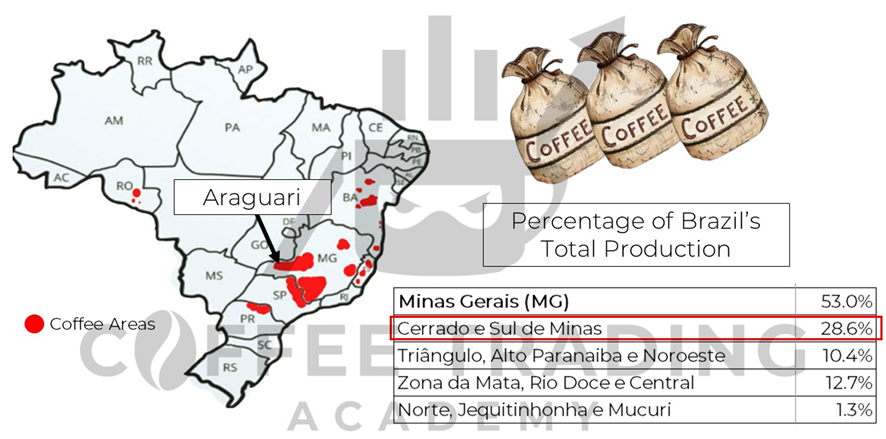
The visit was made on August 17th, amid the ending of harvesting activities (3 weeks left). Still, we managed to see and evaluate the new branches that will form the 2023 crop.
Talking to local producers, they attributed the harvest delay to different reasons. The main one is the fact that flowering was delayed last year due to the poor weather conditions, and this caused the beans to delay reaching maturity.
There are also organization issues and the fact that beans were not dropping in some farms when they started harvesting with machines, which pushed some producers to postpone the beginning of harvesting.
This region was free of frosts in 2021 however, it was still negatively impacted by low (but not freezing) temperatures.
Araguari region relies heavily on irrigation. Locals estimate that at least 90% of the coffee crops in the region are irrigated, which provides an advantage in dry periods that may not be representative of Brazil as a whole. Early flowering in these crops is not a bad sign as the plants will still receive moisture until October.
The overall conditions here for the 23 crop are positive, with no major concerns and a promising crop. Note that “promising” is the key word here. The crops have everything they need so far to perform well next year, but disorders and stress along the way could change that. For this reason we always keep a close eye on weather.
Macaúba Farm
Macaúba farm hadn’t finished its harvesting activities yet when we visited, although most of the volume was picked from the trees.
This farm has 20 year old trees (old for coffee plants), but they were in overall good condition for their age. Coffee plantation are considered old at 15 years and usually renewed with new plants. If the plants are not renewed, productivity decreases as they start to lose lower branches and where bean potential lies.
Although not complete, this crop was mostly harvested and the beans were in drying process in the farm. There were some small signs of plague effect on the leaves, but nothing major. They didn’t see any concerns regarding harvesting less volume than expected.
Macaúba also has a younger set of 7 year old trees. This one was still being harvested and the beans were dry on the trees, as the harvest activities were delayed. The producer left this crop to harvest in the end as the beans took longer to reach maturity.
The flower buds in this farm are ready to blossom when the rainfall season comes in October. In general, conditions look relatively good for next year’s crop.
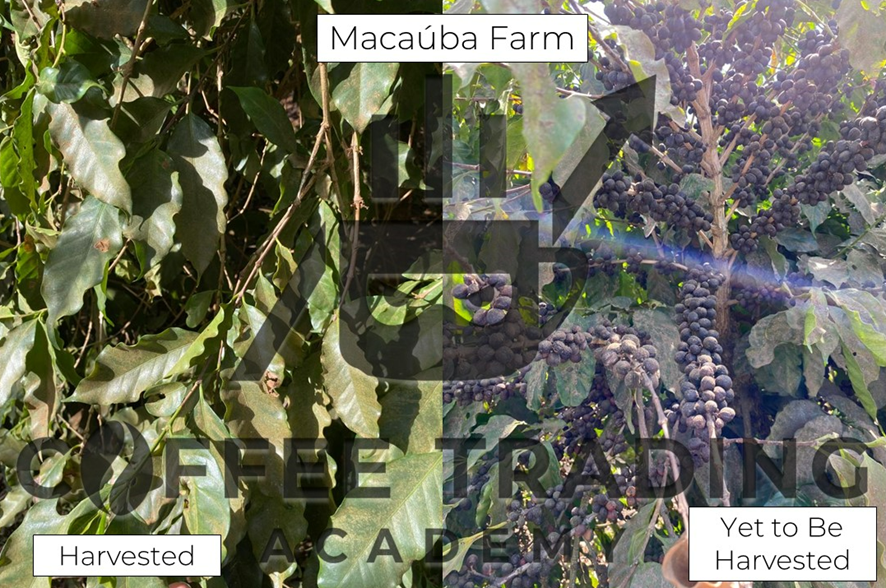
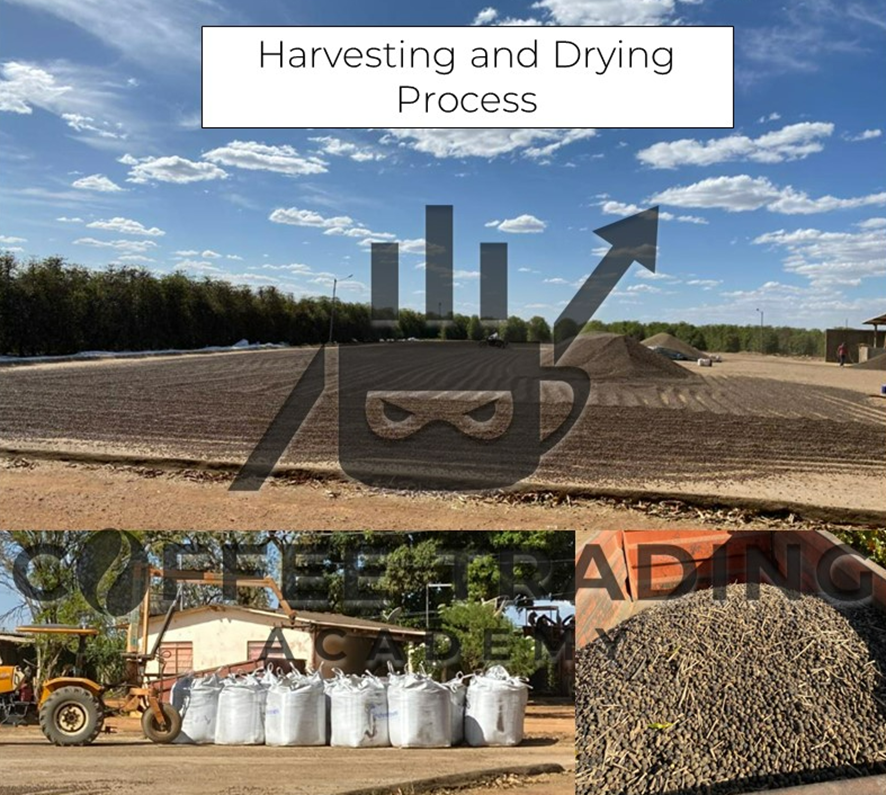
Flor do Amanhecer farm
Overall, this farm is heading to a promising production next year. All 24 hectares are irrigated at a rate of 2.3L of water every 70cm. This is inducing a beautiful flowering that poses no concerns as irrigation provides all of the water that they need.
By the time of our visit, this farm had harvested most of its volume and was picking up the remaining beans off the ground, which is a “normal” delay according to the producer. Same as Macaúba farm, they didn’t see any concerns regarding harvesting less volume than expected.
However, there is an area with a 15 year old set of trees that’s having problems getting new branches instead of blooming. They don’t know exactly the reason, although they suspect it’s from last year’s weather stress from cold temperatures and drought. This will cut off a great portion of next year’s productivity for this crop, specifically.
One bad plantation isn’t representative of poor development for 23, nor is one healthy plantation (such as the younger crop in this same farm) predictive of a promising 23 harvest. However, it does show that there is validity to claims of both good crops and poor crops.
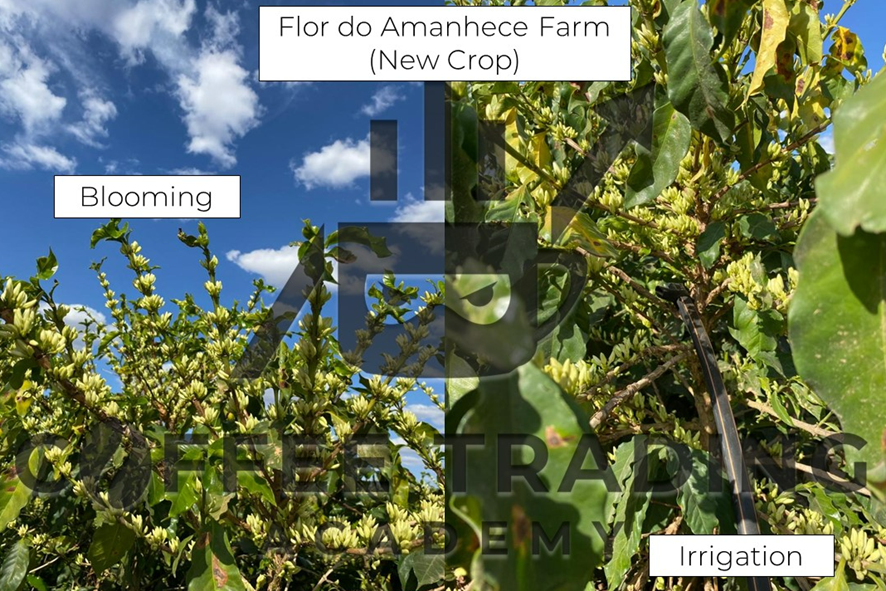
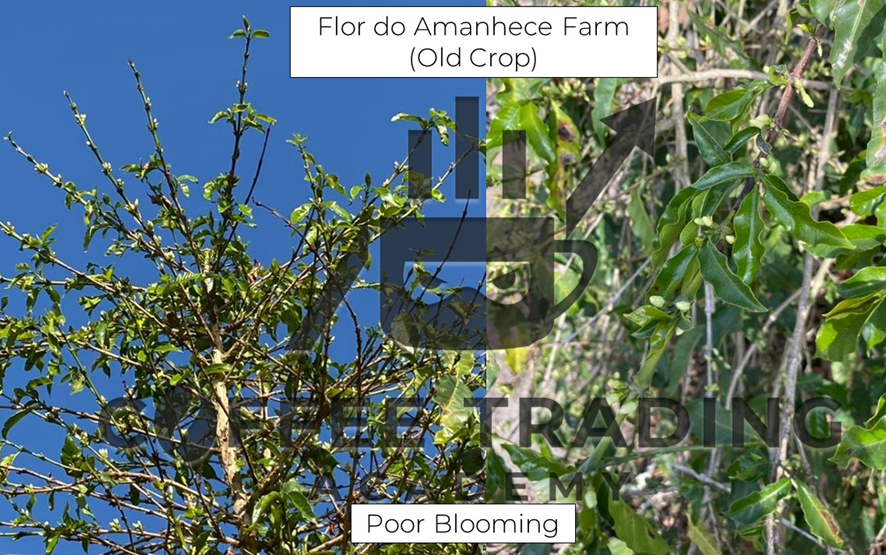
Paraíso Farm
Paraíso was the biggest farm we visited, with 200 hectares of planted area. By the time of the visit, they still had 50 hectares to harvest and expected to finish activities by September 11th. There were no complains of low volume harvested, which is a good sign for the 22 crop.
Paraíso is also irrigated with the same rate as Flor do Amanhecer. They have (induced) early blooming taking place in a new set of trees (planted in 2020) and overall good conditions for next year’s crop. The only “issue” I noticed are some premature beans on the plants that will likely die before making it to next year, but limited not a widespread issue.
This farm also has an older crop that saw an impressive productivity this year, with an average of 64 bags of coffee produced per hectare despite its age.
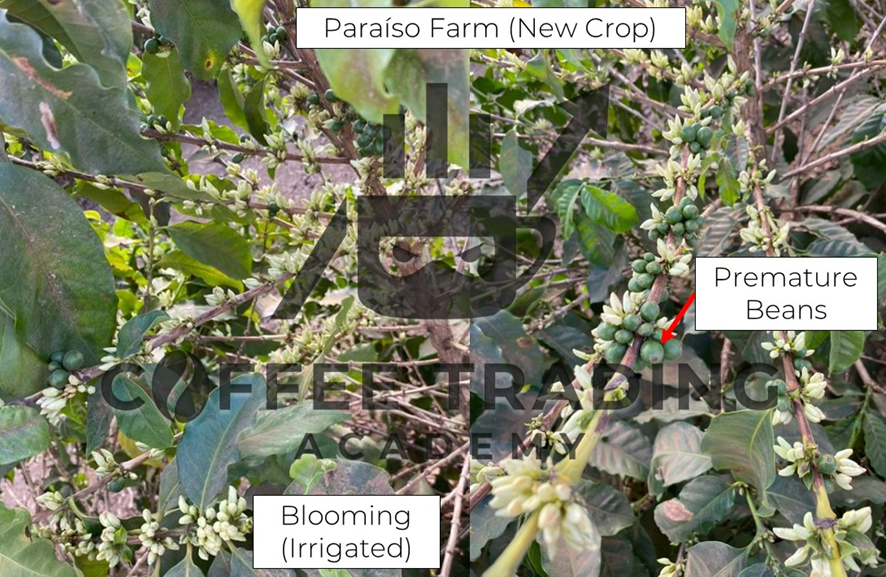
Brazilian Weather Outlook
The weather has so far been neutral-to-supportive for the coffee plants in Brazil. Past months were highly dry, but nothing unusual as the country was (and still is) in its dry period, which in fact enabled harvesting activities and the drying of the beans.
There was a small window of isolated rains across some of the main growing regions, which increased fears of early flowering. This indeed happened.
However, speaking with several different sources based in the main growing regions, we tried to get a wider picture. These sources confirmed some isolated areas of early flowering, but they were not concerned that this would have a big impact on the 23 crop.
Overall, our sources believe the crop is progressing according to normal seasonality and this is true especially for South of Minas and Cerrado, some of the largest producing regions. Therefore, early flowering is so far not expected to be a major issue.
The next important stage is the wet season, starting in October. So far, weather models have been consistent in indicating a good rainfall season supplying the Brazilian coffee areas with the moisture needed for the blooming phase.
Long-range forecasts are inconsistent and of limited value at this point. They can give early warning, but the forecasts are also volatile. They can change back and forth from wet to dry regularly until we get within a few weeks out.
We recently saw a step down in these forecasts, but this hasn’t been consistent. This is a warning sign, but a unique day of less promising wet season predictions is quite low confidence at this point and is not determinant of a poor flowering.
We will keep monitoring these models to see if they oscillate back to the optimal areas that they have been displaying. If this doesn't come out to be the case, we will have a red flag to consider.
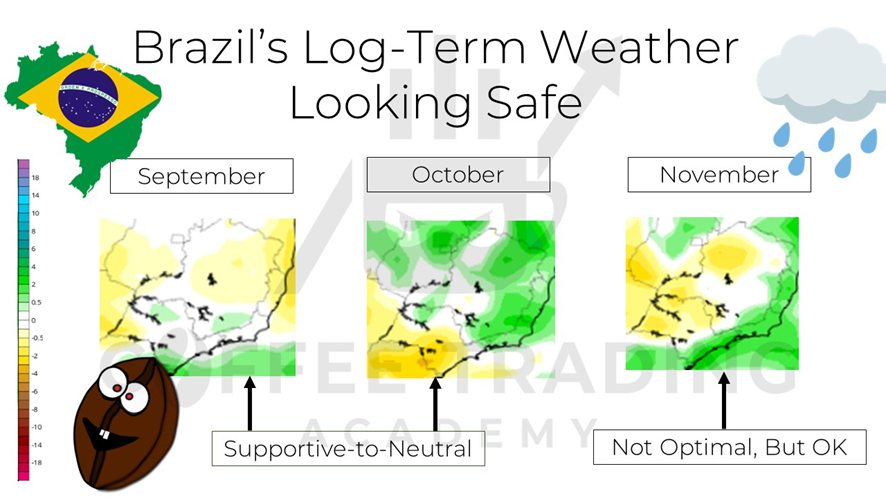
Conclusions
Potential for the 2023 crop in Brazil is not optimal, but it does look to be a substantial improvement over this year (maybe 10-25% up). A lot will depend on weather, specifically the wet season, to see if good prospects will be maintained or lost.
So far, forecasts are more inclined to a positive crop rather than a negative crop, but we cannot take this for granted.
Based on our discussions with sources in the Cerrado and our brief visit, the region is in an overall good position. We hear few complaints of poor volume harvested this year and prospects for the next year look promising. Irrigation is a strong tool at disposal of the producers, but irrigation alone can’t support the plants through the wet season without sufficient rain.
The Cerrado region is an important piece of the puzzle for crop conditions in Brazil, given its solid share in Brazil’s production. Still, we will be monitoring all areas, as isolated good or bad conditions are not representative of the entire Brazilian crop.
תגובות